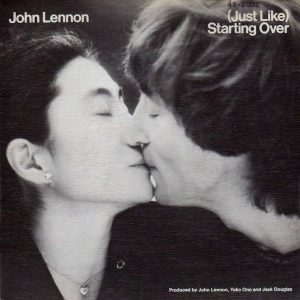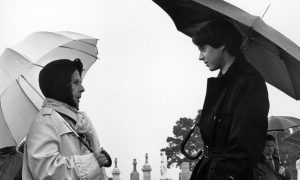You don’t have to look any further than the album titles. Jackie McLean’s One Step Beyond, Grachan Moncur III’s Evolution, and Andrew Hill’s Point of Departure – the mid-60s movement in jazz known as “the New Thing” was all about taking the music to the next level.
In between bebop’s waning days and the full flowering of free jazz, a crafty cadre of forward-thinking artists gave jazz new wings. The method of flight was different than what the faithful were used to, but in the mid-60s the New Thing did for jazz what Cubism had done for art about half a century earlier, offering a whole new mode of experience. In 1964, saxophonist Archie Shepp, a linchpin of the movement, told Downbeat magazine, “The new music reaches back to the roots of what jazz was originally. In a way, it’s a rebellion against the ultra sophistication of jazz.”
Early adopters
There had been other post-bop developments, from cool jazz to Third Stream, but the New Thing pushed jazz ahead like nothing had since the 1940s. Its architects came from bop backgrounds, but by the 60s, they were ready for the next step. The seeds were sown early in the decade by visionary outliers like Cecil Taylor, Sun Ra, Ornette Coleman, Lennie Tristano, Charles Mingus, Jimmy Giuffre, and especially John Coltrane. They gathered strands of Eastern and African sounds, classical constructions, and avant-garde ideas, and brought them to the jazz bandstand.
It didn’t go down easy with the purists at first. Even the jazz bible, Downbeat magazine, flung terms like “nihilistic” and “anti-jazz” at Coltrane and Coleman. But over the next few years, open-minded jazz lovers were blessed with a bumper crop of albums that gleefully subverted old-school ideas and took the early 60s innovations to another place.
Like so much of jazz history, it mostly went down in New York City. If the New Thing’s core crewmembers weren’t from there, by the 60s they got there. And an overwhelming amount of the music was delivered by Impulse! and Blue Note Records. A lot of credit goes to Bob Thiele, who took the former’s reins in 1961, and gave Coltrane – and then his retinue – plenty of elbow room, and even adopted “New Thing” as a marketing tag.
Point of departure
Thiele had already produced a string of Coltrane albums by the time the restlessly searching saxophonist was joined by a full complement of avant comrades in the record racks circa 1964 when the New Thing really hit its stride. Jackie McLean’s One Step Beyond was one of the first out of the chute that year.
Alto man McLean had been a hard-bop heavyweight since the 50s, with more than 20 albums to his credit by ‘64, but Coltrane and company whet his appetite for change. He satiated that desire with the aid of players who would become the movement’s vital organs, including young vibraphone hotshot Bobby Hutcherson, teen drum phenom Tony Williams (already a veteran of Miles Davis’ band), and trombonist Grachan Moncur III.
Moncur was the semi-secret ingredient that put much of the punch in the scene’s special sauce. Though he never achieved the same renown as some of his peers, and health issues eventually caused him to slip out of the spotlight, the trombonist had a vision as vital as any of his sessionmates. He wrote the lion’s share of the tunes on One Step Beyond and its follow-up, Destination… Out, from the spooky, film-noir chord changes to the jittery stop/start tension, Moncur was a master at setting an offbeat, exotic mood. “If Moncur had perished 40 years ago in a car crash, or become one of jazz’s junkie-poets, he might be a legend today,” claimed Adam Shatz in the New York Times in 2003.
In both McLean records’ piano-less lineups, Hutcherson takes the chordal role, his arch, tremulous harmonies moving things further from bop convention. His nimbly serpentine solos tug at the harmonic foundations for just the right amount of friction.
Hutcherson, McLean, and Williams all turn up on Moncur’s debut as a leader, Evolution, released just a few months later. Hard-bop trumpet hero Lee Morgan threw in with the New Thing crew too – he and McLean definitively debunk the old dog/new tricks maxim (despite his youth, Morgan had already made more than a dozen bop-centric albums under his own name). Evolution carries the cause further toward the fringes than McLean’s records, twisting the tunes into tantalizing shapes like a balloon-animal maker gone mad. Thorny but blues-informed melodies and science-fiction chord changes underscore the influence of Thelonious Monk (an early mentor of McLean) on the New Thing.
Venturing into unmapped terrain
That summer, Hutcherson, and Williams both turned up on an album that did more to plant the flag for the new sound than almost anything else: Eric Dolphy’s Out to Lunch. Multi-reed master Dolphy began as one of bop’s most outside-the-box thinkers, and he’d already been venturing into unmapped terrain, but Out to Lunch was where it all came together.
With bassist Richard Davis and another heavyweight hard-bop trumpeter, Freddie Hubbard, completing the line-up, Out to Lunch is a Picasso painting of jazz in a funhouse mirror. With just enough trace elements of bebop and Hutcherson providing impressionistic overlay, Dolphy and his gang constructed an intense but inviting alternate-universe vision of jazz, letting the world at large know the New Thing had arrived.
In his Biographical Encyclopedia of Jazz, noted jazz writer Leonard Feather cited Mingus gushing over Dolphy, “He knew that level of language which very few musicians get down to.” Though the album would remain a milestone forevermore, it was Dolphy’s swan song. He died from diabetes in between its recording and release.
Andrew Hill’s subtly subversive Judgment! arrived the next month, with Hutcherson, Davis, and drum doyen Elvin Jones. Without any horns to hog the spotlight, Hill’s heady piano concepts lead the band into a sonic shadow play, defined by a sense of something dark and heavy lurking just under the surface.
In 1965, adventurous jazz lovers jolted by Hutcherson’s work with Dolphy and Hill got a thousand-watt blast of the mallet maverick’s brilliance on his bandleader debut, Components. Rejoined by Hill and Davis, with Joe Chambers manning the drum stool and James Spaulding and Freddie Hubbard added on reeds and trumpet, respectively, Hutcherson proves himself a poet of both vibes and marimba. One moment he’s throttling a Latin vamp like a crazed mambo man, and the next, he’s gleefully dropping bop from a high-rise roof and reassembling its shards like a hip Dr. Frankenstein for his own thrillingly transgressive ends.
Coltrane’s influence and beyond
None of this might have happened if Coltrane wasn’t taking a blowtorch to jazz convention since the late 50s, later leaping into the deep end to challenge traditional notions of rhythm and harmony on Impressions (‘63) and Crescent. Trane’s masterwork, A Love Supreme, arrived in ‘65. The album-length suite uses open-ended structures, vocal chants, minimalism, drastic dynamic shifts, modal playing, and an overarching spiritual theme to redefine the possibilities not only for jazz but for music itself. It remains one of the most revered, influential residents of the jazz canon, and the ne plus ultra of the New Thing era. In a 2017 interview for The Sound of Vinyl, Henry Rollins said, “It was a record that made me understand the possibility of music….every house should come with this record.”
Coltrane had taken young tenor man Archie Shepp under his wing, who contributed to the album’s sessions, though they didn’t make the final cut. But Shepp’s 1964 LP Four for Trane had already taken his mentor’s music places not even Coltrane had envisioned. With a frontline including two of the movement’s most audacious minds, trombonist Roswell Rudd and flugelhornist Alan Shorter (sax star Wayne’s brother), Shepp deconstructs and rebuilds Trane’s late-50s compositions in a brainy-but-visceral modernist mode.
Shepp’s follow-up, Fire Music, is a landmark statement that underlined progressive jazz’s increasing bond with the Black Power movement’s activism and identity politics. The impressionistic tone poem “Malcolm, Malcolm – Semper Malcolm” even shifts into prose poetry with a recitation of an angry eulogy for the recently assassinated Malcolm X.
Shepp and Coltrane’s bands shared a stage at the 1965 Newport Jazz Festival, and the results reside on New Thing at Newport, one of the scene’s mightiest live albums. Trane’s classic quartet with McCoy Tyner, Jimmy Garrison, and Elvin Jones exploded in so many directions on that July night, it’s a wonder the fire department wasn’t summoned. Shepp’s group with Bobby Hutcherson, Joe Chambers, and bassist Barre Phillips, alternately slips quietly through darkened caverns and turns combustible when the leader recites some more inflamed, socially conscious poetry.
After the New Thing vigorously shook up the soda bottle, jazz exploded into multiple directions – free jazz, fusion, and the next-level abstractions of the Association for the Advancement of Creative Musicians (A.A.C.M.) based around the Art Ensemble of Chicago.
In 1986, with two decades’ worth of hindsight, respected music journalist Robert Palmer wrote in the New York Times, “The avant-garde jazz of the 1960s, that initially chaotic-sounding assault on traditional notions of harmony, rhythm, and structure, has stayed the course, gone the distance.” But none of it would have been possible if a loose-knit coterie of jazz adventurers hadn’t forsaken old ways for the New Thing.
Looking for more? Discover What Is Bebop? Deconstructing Jazz Music’s Most Influential Development.




